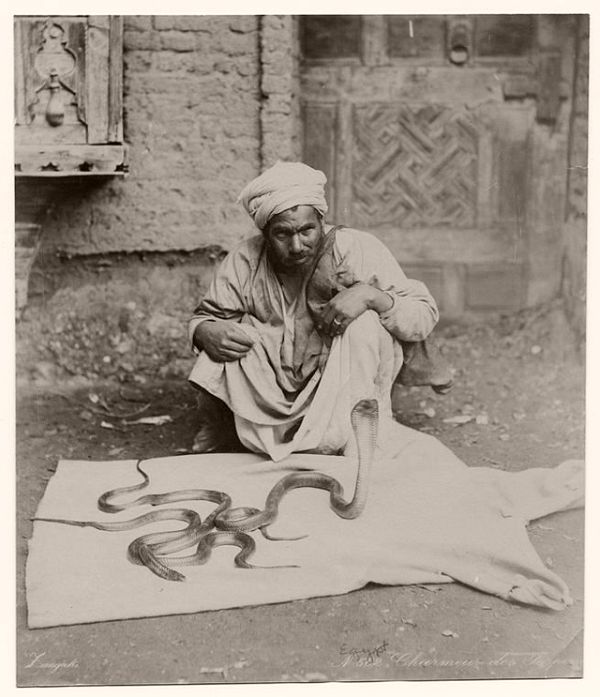Everyday Life of Egypt
(late 19th Century)
الحياة اليومية في مصر
(أواخر القرن التاسع عشر)
وظلت مصر تحت حكم محمد علي تبقى اسمياً محافظة عثمانية. تم منح مركز دولة تابعة مستقلة أو خديفيات في عام 1867 ، وهو وضع كان سيبقى في مكانه حتى عام 1914.
اكتملت قناة السويس ، التي شُيدت بالشراكة مع الفرنسيين ، في عام 1869. وأدى بناءها إلى ديون هائلة للبنوك الأوروبية ، وتسبب في استياء شعبي بسبب فرض ضرائب باهظة لازمة لها. في عام 1875 ، أُجبر إسماعيل على بيع حصة مصر في القناة إلى الحكومة البريطانية. في غضون ثلاث سنوات ، أدى ذلك إلى فرض السيطرة على البريطانيين والفرنسيين الذين جلسوا في الحكومة المصرية ، و "مع السلطة المالية لحملة السندات وراءهم ، كانت القوة الحقيقية في الحكومة".
حالات أخرى مثل الأمراض الوبائية (مرض الأبقار في ثمانينيات القرن التاسع عشر) ،
أدت الفيضانات والحروب إلى الانكماش الاقتصادي وزادت من اعتماد مصر على الديون الخارجية أكثر من ذلك.
في السنوات الأخيرة ، أصبحت الأسرة دمية بريطانية. حكم إسماعيل وتوفيق باشا مصر كدولة شبه مستقلة في ظل سيادة العثمانيين حتى الاحتلال البريطاني عام 1882.
Everyday Life of Egypt
(late 19th Century)
Egypt under the Muhammad Ali dynasty remained nominally an Ottoman province. It was granted the status of an autonomous vassal state or Khedivate in 1867, a status which was to remain in place until 1914.
The Suez Canal, built in partnership with the French, was completed in 1869. Its construction led to enormous debt to European banks, and caused popular discontent because of the onerous taxation it required. In 1875 Ismail was forced to sell Egypt’s share in the canal to the British government. Within three years this led to the imposition of British and French controllers who sat in the Egyptian cabinet, and, “with the financial power of the bondholders behind them, were the real power in the Government.”
Other circumstances like epidemic diseases (cattle disease in the 1880s),
floods and wars drove the economic downturn and increased Egypt’s dependency on foreign debt even further.
In later years, the dynasty became a British puppet. Isma’il and Tewfik Pasha governed Egypt as a quasi-independent state under Ottoman suzerainty until the British occupation of 1882.
(late 19th Century)
الحياة اليومية في مصر
(أواخر القرن التاسع عشر)
وظلت مصر تحت حكم محمد علي تبقى اسمياً محافظة عثمانية. تم منح مركز دولة تابعة مستقلة أو خديفيات في عام 1867 ، وهو وضع كان سيبقى في مكانه حتى عام 1914.
اكتملت قناة السويس ، التي شُيدت بالشراكة مع الفرنسيين ، في عام 1869. وأدى بناءها إلى ديون هائلة للبنوك الأوروبية ، وتسبب في استياء شعبي بسبب فرض ضرائب باهظة لازمة لها. في عام 1875 ، أُجبر إسماعيل على بيع حصة مصر في القناة إلى الحكومة البريطانية. في غضون ثلاث سنوات ، أدى ذلك إلى فرض السيطرة على البريطانيين والفرنسيين الذين جلسوا في الحكومة المصرية ، و "مع السلطة المالية لحملة السندات وراءهم ، كانت القوة الحقيقية في الحكومة".
حالات أخرى مثل الأمراض الوبائية (مرض الأبقار في ثمانينيات القرن التاسع عشر) ،
أدت الفيضانات والحروب إلى الانكماش الاقتصادي وزادت من اعتماد مصر على الديون الخارجية أكثر من ذلك.
في السنوات الأخيرة ، أصبحت الأسرة دمية بريطانية. حكم إسماعيل وتوفيق باشا مصر كدولة شبه مستقلة في ظل سيادة العثمانيين حتى الاحتلال البريطاني عام 1882.
 |
People at a mosque in Cairo
|
 |
Snake charmer
|
 |
Street in Cairo
|
 |
Barber shop
|
 |
Fellah women
|
 |
Group of Sudanese in Egypt
|
 |
Luxor, Ramesses II
|
 |
Merchant women
|
 |
Mobile Arab restaurant in Egypt
|
 |
Musicians with their stringed instruments
|
 |
A group of Bisharin before their tent at Wady Halfa, Egypt
|
 |
Ancient transportation, Nile, Egypt
|
 |
Cairo New Hotel
|
 |
Down Nile from Kasr-el-Nil (Nile bridge), Egypt
|
 |
Feed boats (trodden straw) unloading on the Nile, Egypt
|
 |
Great Sphinx of Giza
|
 |
Men ridding on their donkeys
|
 |
Mit Rahine (statue Ramses)
|
 |
In front of Temple of Amun gateway in Luxor
|
 |
Children on a horse wagon
|
 |
People with their camels on the Nile
|
 |
People with their donkey cart
|
 |
Pottery shipping at Nile River
|
 |
The Great Sphinx of Giza
|
 |
The Great Sphinx of Giza
|
 |
The irrepressible donkey boys at Cairo
|
 |
Women with their donkey cart
|
Everyday Life of Egypt
(late 19th Century)
Egypt under the Muhammad Ali dynasty remained nominally an Ottoman province. It was granted the status of an autonomous vassal state or Khedivate in 1867, a status which was to remain in place until 1914.
The Suez Canal, built in partnership with the French, was completed in 1869. Its construction led to enormous debt to European banks, and caused popular discontent because of the onerous taxation it required. In 1875 Ismail was forced to sell Egypt’s share in the canal to the British government. Within three years this led to the imposition of British and French controllers who sat in the Egyptian cabinet, and, “with the financial power of the bondholders behind them, were the real power in the Government.”
Other circumstances like epidemic diseases (cattle disease in the 1880s),
floods and wars drove the economic downturn and increased Egypt’s dependency on foreign debt even further.
In later years, the dynasty became a British puppet. Isma’il and Tewfik Pasha governed Egypt as a quasi-independent state under Ottoman suzerainty until the British occupation of 1882.
ليست هناك تعليقات:
إرسال تعليق